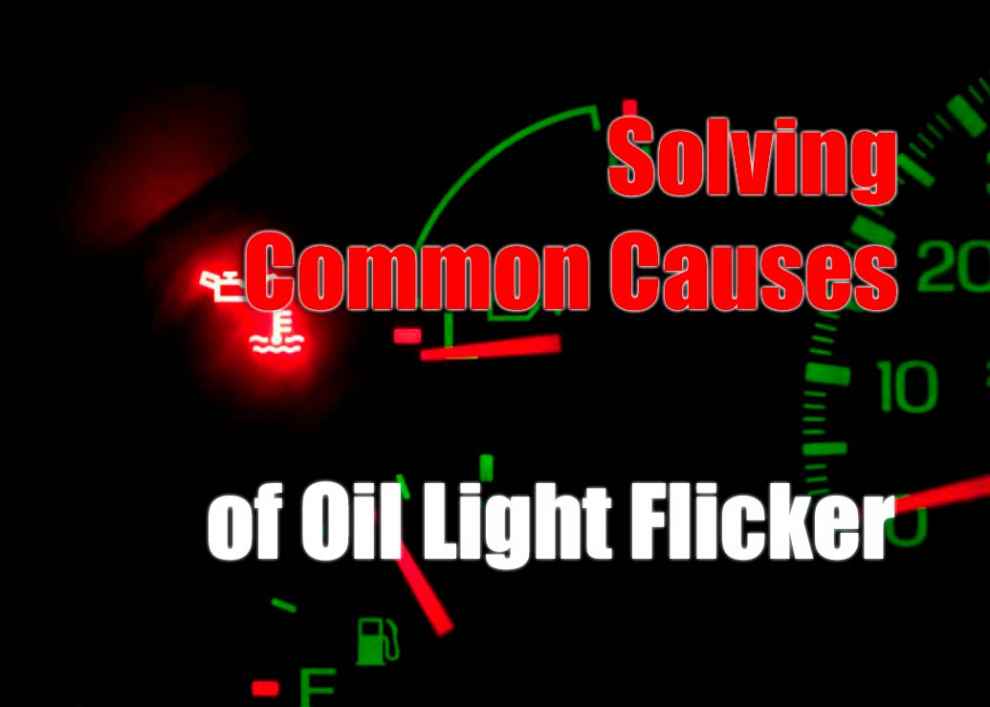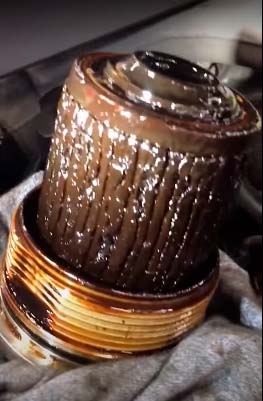An oil light flicker is a common problem seen on vehicles, including Jeeps. Various mechanical or electrical issues can cause this warning and should be addressed immediately to avoid damage to your engine. If you’re experiencing an oil light flicker, it’s important to understand the underlying causes and how to address them correctly. In this article, we’ll discuss the most common causes of an oil light flicker in your Jeep and how to troubleshoot them.
Symptoms of Oil Light Flicker in Your Jeep
Experiencing such light flickering in your Jeep can be an alarming sign that should not be ignored. This phenomenon typically indicates a potential problem with the oil system. If you notice such a problem in your Jeep, there are several symptoms to watch out for. Firstly, you may observe the oil light flickering or flashing intermittently, often accompanied by a beeping sound. This usually indicates a drop in oil pressure, which can be caused by various factors such as a malfunctioning oil pump, clogged oil filter, or insufficient oil level. Additionally, you may notice unusual engine noises, such as knocking or ticking sounds, which could suggest inadequate lubrication. Engine performance issues, such as reduced power or hesitation, may also be present. It is essential to address the issue promptly to avoid potential engine damage or failure. If you encounter these symptoms, it is recommended to immediately stop driving the vehicle, check the oil level, and consult a qualified mechanic for a thorough inspection and necessary repairs.
Common Causes of Oil Light Flicker
Oil light flickering in a vehicle can be caused by various factors related to the oil system. Some common causes include:
-
Low oil level: Insufficient oil in the engine can lead to a drop in its pressure, triggering the light to flicker. This can occur due to oil leaks, consumption over time, or improper oil changes.
-
Faulty oil pressure sensor: This sensor detects the oil pressure and signals the light to illuminate. A malfunctioning sensor can result in erratic readings and cause the light to flicker even if the oil pressure is normal.
-
Clogged oil filter: This filter can restrict oil flow, leading to a drop in oil pressure. This can cause the light to flicker as the pressure fluctuates.
-
Worn-out oil pump: The pump circulates oil throughout the engine to ensure proper lubrication. If the pump becomes worn or damaged, it may fail to maintain adequate oil pressure, resulting in oil light flickering.
-
Engine wear or damage: Excessive engine wear, such as worn bearings or piston rings, can lead to increased oil consumption and reduced its pressure. This can cause the oil light to flicker as the oil system struggles to maintain proper lubrication.
-
Incorrect oil viscosity: Using oil with an incorrect viscosity grade for your vehicle’s specifications can affect its ability to maintain proper oil pressure.
-
Electrical issues: Sometimes, flickering oil lights can be caused by electrical problems, such as a loose connection or a faulty wiring harness, which interferes with the signal from the oil pressure sensor.
When faced with the oil light flickering, it is crucial to address the issue promptly. Check the oil level and ensure it is at the recommended level. If it is low, top it up. If the problem persists or there are other symptoms, it is recommended to consult a qualified mechanic for a comprehensive inspection. They can diagnose the specific cause of the flickering oil light and perform the necessary repairs or maintenance to restore proper oil pressure and ensure the health of your vehicle’s engine.
Troubleshooting Solutions of Oil Light Flicker
The first step in troubleshooting an oil light flicker is to check the vehicle’s engine oil level using the dipstick. If there’s insufficient engine oil, you should top up your car’s engine with fresh motor oil to restore proper lubrication levels and reduce strain on other engine system components. Once you have filled up your vehicle’s engine with new motor oil, recheck the dipstick to ensure you have added enough.
If checking and adding more motor oil does not resolve the flickering of your car’s Oil Light, another possible cause could be worn-out or fouled spark plugs. Spark plugs provide the spark necessary for your car’s engine to function properly. Worn-out or fouled spark plugs can cause an insufficient spark, resulting in various mechanical problems, including a flickering oil light. In this case, you should replace your car’s old spark plugs with new ones and check if the oil light is still flickering.
Suppose the issue remains unresolved after replacing the old spark plugs with new ones. In that case, it is recommended that you inspect other components of your car’s engine, such as distributor caps, ignition coils, fuel injectors, or fuel pumps, to ensure that they are functioning correctly and not causing any disruption in your vehicle’s performance. If these components are working correctly, looking at the car’s computer system would be beneficial, which could indicate a problem with one of the engine’s sensors or other electronic components.
In some cases, faulty wiring harnesses could also cause false readings from sensors and result in a flickering Oil Light indicator on your dashboard and various potential engine malfunctions. Therefore, inspect all these components when troubleshooting an oil light flicker and address any issues.
Table of Common Causes and Fixing of Oil Light Flicker
|
Cause |
Fixing |
|
Low oil level |
Check the oil level and ensure it is at the recommended level. If the oil level is low, top it up with the appropriate type and amount of oil. |
|
Faulty oil pressure sensor |
Inspect the sensor for any physical damage or signs of wear. Additionally, check the wiring connections to ensure they are secure and free from corrosion or loose connections. If any issues are detected, consider replacing the oil pressure sensor or repairing the wiring as required. |
|
Clogged oil filter |
Inspect the filter for any signs of clogging or contamination. Replace if necessary. |
|
Worn-out oil pump |
Seek assistance from a qualified mechanic to evaluate and repair/replace if necessary. |
|
Engine wear or damage |
Consult a qualified mechanic to inspect your engine for any signs of wear or damage that may be impacting oil pressure. They can also diagnose other potential causes, such as incorrect viscosity grade, electrical issues, etc., and perform necessary repairs or maintenance to restore proper lubrication. |
Conclusion
Oil light flickering in a vehicle is often caused by various issues related to the oil system. It is important to address this issue promptly, as it can indicate a drop in oil pressure or insufficient lubrication, which could cause serious engine damage if left unaddressed. To troubleshoot the problem correctly, check the oil level and ensure it is at the recommended level. Inspect the oil filter for any signs of clogging or contamination and inspect and replace any faulty wiring or components if needed. Consider using an appropriate oil viscosity grade for your vehicle’s specifications. If all these steps fail to resolve the issue, seek assistance from a qualified mechanic who can inspect your vehicle’s engine thoroughly and provide professional advice on any necessary repairs or maintenance.

 Clogged oil filter: This filter can restrict oil flow, leading to a drop in oil pressure. This can cause the light to flicker as the pressure fluctuates.
Clogged oil filter: This filter can restrict oil flow, leading to a drop in oil pressure. This can cause the light to flicker as the pressure fluctuates.
Add Comment